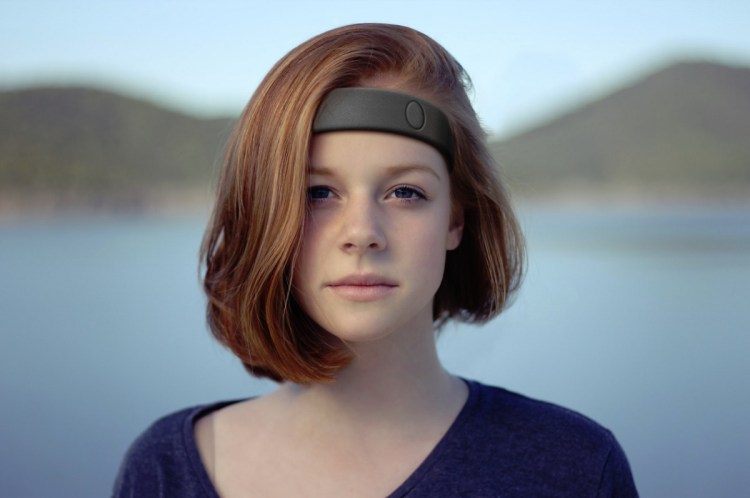In recent years, athletes in traditional sports leagues such as Major League Baseball, the National Basketball Association, and the National Football League have started utilizing wearable technologies capable of tracking previously unavailable biometric data. This data allows athletes and teams to better understand the athletes’ bodies and performance, which can improve their production and efficiency.
Due to the different skill sets needed for traditional sports compared to esports, impactful wearable technologies have yet to catch on in major North American esports leagues, such as Blizzard’s Overwatch League and Riot’s North American League of Legends Championship Series. Expect this to charge in 2019, led by Australian company HUMM Technologies.
Helping pros track cognitive performance
HUMM has developed Edge, a new wearable headband for esports professionals. Edge tracks eye movement, heart rate, and cognitive patterns. HUMM’s platform uses metrics collected by Edge to analyze, in real time, the focus and stress levels of players and calculates the points during play sessions where players’ performances fall off. HUMM also proclaims the headband will deliver electrical signals to a user’s frontal cortex to improve cognitive performance, such as concentration and learning new skills, via electrical signals that amplify brainwave patterns.
HUMM continues to work with numerous esports organizations to support increased athlete performance. Esports professionals who use Edge should expect to be better equipped to avoid burnout and enhance their cognitive performance. Though the use of wearable technology like Edge offers benefits for esports professionals, teams, and leagues, it is not without its drawbacks.
June 5th: The AI Audit in NYC
Join us next week in NYC to engage with top executive leaders, delving into strategies for auditing AI models to ensure fairness, optimal performance, and ethical compliance across diverse organizations. Secure your attendance for this exclusive invite-only event.
Helping pros and teams reduce burnout
Burnout is, arguably, the biggest issue facing esports professionals. Unlike traditional sports athletes, who often play into their 30s and sometimes 40s, esports professionals are typically forced to retire in their early 20s. These short careers primarily are the result of demanding practice schedules and fierce competition for limited roster spots. Unlike athletes in traditional sports whose practice time is implicitly capped due to physical limitations, esports professionals conceivably can practice forever given that their sport does not require the same physical exertion. This pressure leads to teams like the Shanghai Dragons of the OWL to spend over 12 hours per day, six days per week honing their craft.
Wearable technology, such as Edge, can help to solve this problem by allowing teams and players to monitor player fatigue and wellness effectively. Improving player wellness is a win-win situation for players and the esports teams, as healthier, well-rested players can be expected to perform better. Further, players can use data gleaned from wearable technologies to help manage stress and assess performance, and teams can use the data when scouting new talent and establishing training programs for their existing players. Ultimately, wearable technology can benefit the esports industry as a whole by prolonging player careers.
Privacy concerns
The emergence of wearable technologies in traditional sports leagues has been a net positive, but the intensely personal nature of the data that these technologies track also has led to privacy concerns. As wearables begin to infiltrate the esports industry, players, teams, and leagues must be aware of these concerns and be prepared to address them.
For example, in MLB and the NBA, some teams hope to have their players wear biometric trackers not just while playing or practicing, but also while sleeping to make sure the players are practicing healthy sleep habits. Though information such as this may be helpful for maximizing player performance, such around-the-clock monitoring might also be considered an invasion of privacy by an employer. Additionally, disputes have arisen in traditional sports leagues about whether the player or the team own the data gleaned by wearables. Thus, when using wearable technologies, esports teams must consider the privacy concerns of their players.
Most concerning is that teams could use the data from wearables to the detriment of players during contract negotiations. For example, if a team in a traditional sports league has data suggesting that players are not fully exerting themselves in practice or are especially prone to a long-term injury, they might use this data in an attempt to drive down the player’s value. Though the highest-paid esports pros earn significantly less than elite athletes in traditional sports leagues, esports pros should still be aware of this risk when considering whether to use wearable technologies.
Increase of wearables in 2019
As the esports industry continues to grow and embraces new wearable technologies, players, teams, leagues, and the professionals advising them must carefully consider the benefits and drawbacks of using wearables. If used correctly, wearable technologies can improve player performance and prolong careers, benefiting the industry as a whole.
Expect increased investment and attention to performance-enhancing wearable technology, most notably the Sports Zone at the Consumer Technology Association’s prestigious CES annual event (with a focus on brain analytics and eye-tracking). Industry attention and investment in wearable technology and related analytics will result in increased partnerships between emerging technology companies and esports teams and leagues and disruption to the way esports athletes train and perform.
Aaron Swerdlow is an attorney at Glaser Weil LLP representing sports (traditional and esports), corporate, and emerging technology entities.


